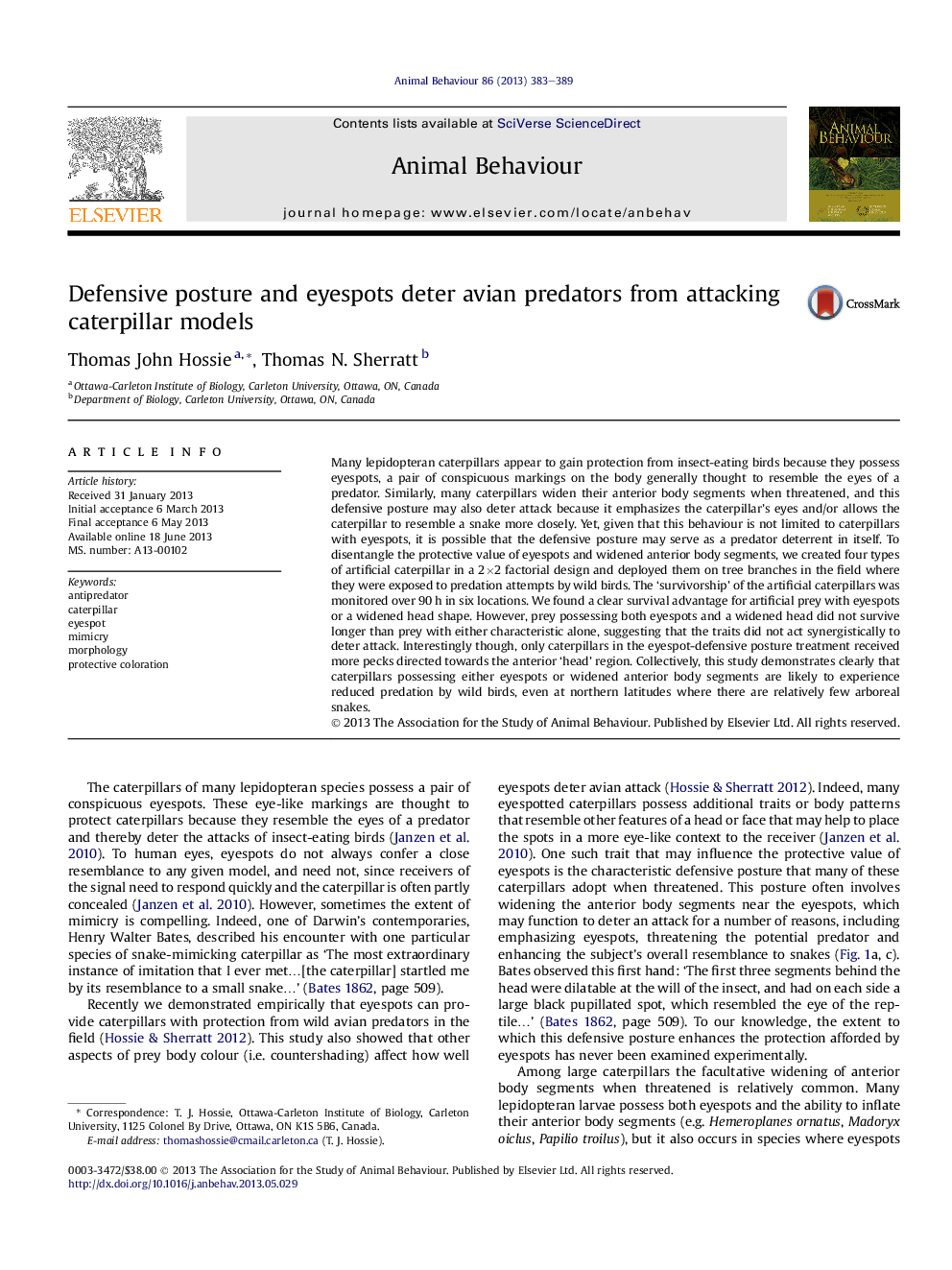| کد مقاله | کد نشریه | سال انتشار | مقاله انگلیسی | نسخه تمام متن |
|---|---|---|---|---|
| 2416604 | 1104282 | 2013 | 7 صفحه PDF | دانلود رایگان |

• A defensive posture where caterpillars inflate anterior segments may augment the protective effect of eyespots.
• We examined the protective value of eyespots and defensive posture using caterpillar models.
• Treatments followed a 2×2 factorial design and were deployed in the field for 90 h.
• Eyespots and wide head shape did not act synergistically to reduce predation.
• Both eyespots and defensive posture of caterpillars significantly conferred protection against predatory birds.
Many lepidopteran caterpillars appear to gain protection from insect-eating birds because they possess eyespots, a pair of conspicuous markings on the body generally thought to resemble the eyes of a predator. Similarly, many caterpillars widen their anterior body segments when threatened, and this defensive posture may also deter attack because it emphasizes the caterpillar's eyes and/or allows the caterpillar to resemble a snake more closely. Yet, given that this behaviour is not limited to caterpillars with eyespots, it is possible that the defensive posture may serve as a predator deterrent in itself. To disentangle the protective value of eyespots and widened anterior body segments, we created four types of artificial caterpillar in a 2×2 factorial design and deployed them on tree branches in the field where they were exposed to predation attempts by wild birds. The ‘survivorship’ of the artificial caterpillars was monitored over 90 h in six locations. We found a clear survival advantage for artificial prey with eyespots or a widened head shape. However, prey possessing both eyespots and a widened head did not survive longer than prey with either characteristic alone, suggesting that the traits did not act synergistically to deter attack. Interestingly though, only caterpillars in the eyespot-defensive posture treatment received more pecks directed towards the anterior ‘head’ region. Collectively, this study demonstrates clearly that caterpillars possessing either eyespots or widened anterior body segments are likely to experience reduced predation by wild birds, even at northern latitudes where there are relatively few arboreal snakes.
Journal: Animal Behaviour - Volume 86, Issue 2, August 2013, Pages 383–389